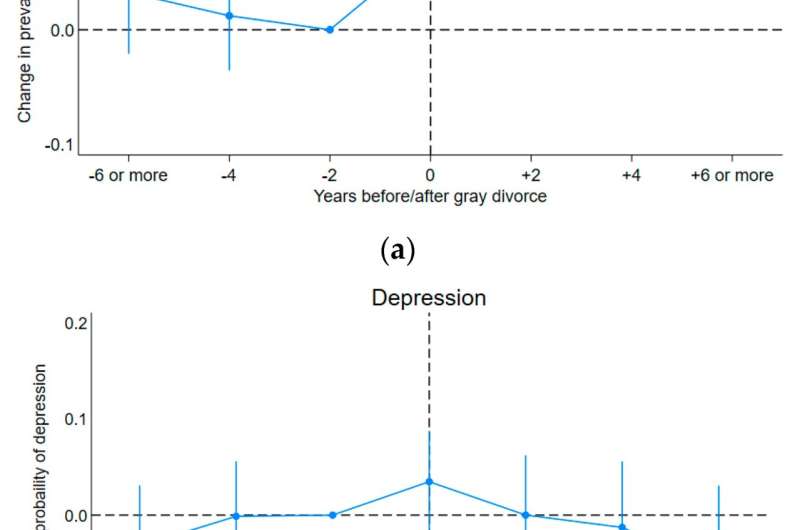This article has been reviewed according to Science X's editorial process and policies. Editors have highlighted the following attributes while ensuring the content's credibility:
fact-checked
peer-reviewed publication
trusted source
proofread
Study finds gray divorce puts women at greater risk of food insecurity

The COVID-19 pandemic saw increased rates and public awareness of food insecurity. One group that was particularly vulnerable was older adults.
There are still gaps in research on food insecurity among older Americans—including the impact of gray divorces—divorce after the age of 50, which has been rising at astounding rates.
Tatiana Andreyeva, associate professor in the College of Agriculture, Health and Natural Resources and director of economic initiatives at the UConn Rudd Center for Food Policy and Health, worked with her former Ph.D. student Hang Zhao to publish a paper in Nutrients on the impact of gray divorce on food insecurity among older Americans. Zhao, who is now a visiting assistant professor at Allegheny College, is the lead author on the paper.
The researchers found that following a gray divorce the risk of food insecurity increases for women but not for men.
"Gray divorce is associated with an increase in food insecurity for women," says Andreyeva, whose academic home is the Department of Agricultural and Resource Economics. "There is a significant gender difference, as we don't really see that increase for divorced older men."
Overall, food insecurity increased by 7.3% in the year of the divorce, by 9.5% two years after, and by 10.3% four years after the divorce compared to the control population of couples who have not divorced yet but would experience divorce in later years. Compared to men, the risk of food insecurity among women increased by 7.7% in the year of divorce, 9.9% in the four years following, and 10.4% after six or more years.
Andreyeva says social factors could explain this disparity. Women, especially older women, are less likely to be employed and less likely to be employed in high paying jobs, making them more dependent on a male spouse for financial stability.
Functional disability (having trouble with daily tasks like walking or showering) also increased by 5.4% in the year following a gray divorce for both men and women.
"Maybe now they don't have a caretaker because usually spouses are caretakers," Andreyeva says. "So, people have more problems taking care of themselves and end up experiencing even more functional limitations."
Food insecurity and disability increase following gray divorce and remain increased for years after. By contrast, no significant impacts were found for depression. Older adults seemed to exhibit a trend towards returning to pre-divorce/separation levels of depression soon after their marital breakup.
This study used a large national dataset called the Health and Retirement Study (HRS) which has been gathering information about Americans over 50 since 1992.
The paper's definition of food insecurity was based on respondents' answers to the two yes or no questions about food insecurity in the HRS. The HRS asks if respondents always have enough money to buy the food they need, and if they have ever skipped meals or eaten less than they should because they didn't have enough food in the house.
The researchers looked at a subset of the data from 1998 to 2018, the last year available. Their sample included couples who were married in 1998 and divorced or separated and did not remarry within this time, which was 736 individuals.
Zhao is interested in continuing this research on older Americans using machine learning models which offer different advantages in interpreting data like what appears in the HRS.
"Machine learning models focus more on predictions, while our traditional models focus on the casual relationship," Zhao says. "Sometimes it's actually hard to identify the causal relationship due to the endogeneity problem, which can arise from various factors, including insufficient control variables. So, I think the machine learning model may be a way to go."
More information: Hang Zhao et al, Food Security and Health Outcomes following Gray Divorce, Nutrients (2024). DOI: 10.3390/nu16050633




















